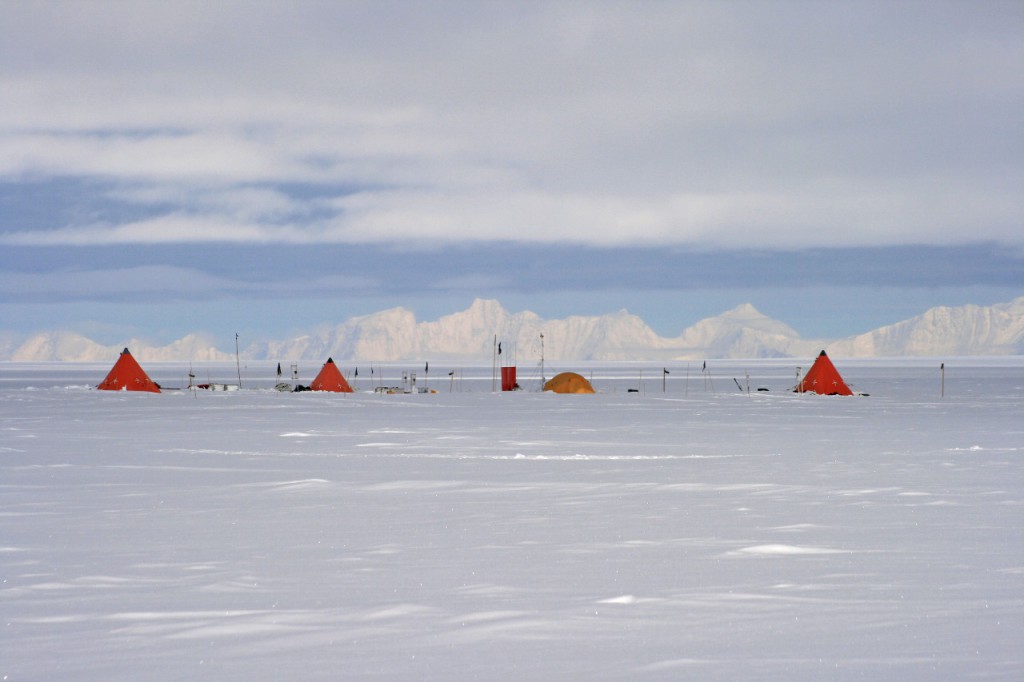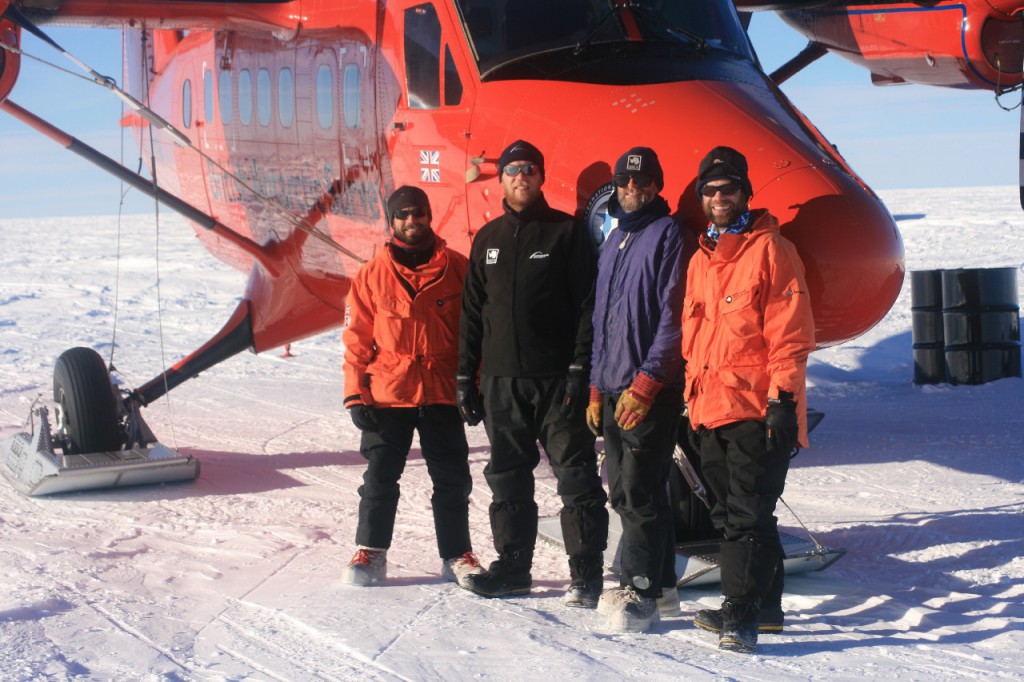Drilling into the unknown – the first exploration of a sub-glacial Antarctic lake is a major step closer
Scientists have located the ideal drill site for the first ever exploration of an Antarctic sub-glacial lake, a development that it likely to facilitate a revolution in climate-change research and which may lead to the discovery of life-forms cut off from the main line of evolution for millions of years.
In a paper published in Geophysical Research Letters this week, scientists from Northumbria University, the University of Edinburgh and the British Antarctic Survey have revealed the optimal drill site for exploring Lake Ellsworth, a sub-glacial lake comparable in size to Lake Windermere which is covered by three kilometres of ice.
No one has yet drilled into an Antarctic sub-glacial lake. But microbiologists believe that such lakes could harbour uniquely adapted life-forms cut-off from other lines of evolution. Paleoclimatologists also suggest that sediments on the lake floors could contain records of ice sheets and climate history that would revolutionise research into global warming.

A 4-man party spent 3 months camped on the plateau of the West Antarctic Ice Sheet conducting a geophysical reconnaissance of Subglacial Lake Ellsworth (SLE). SLE is a lake the size of Windermere trapped in a bed hollow beneath 3 km of ice. It has been identified as a suitable target for further exploration, including drilling through the ice and into the lake to investigate isolated life forms and ice sheet history. The geophysical exploration in 2007/08 mapped the lake surface and bed, tracked the ice motion as it flows over the lake, and made measurements of snow temperature, accumulation and density.
In order to access the lake water and the undisturbed sediment containing the climate record, it is essential to drill in the right place.
The optimal drilling site has to avoid possible areas of in-coming water that would disturb the sediment, as well as areas of so-called basal freezing — where lake water freezes to the underside of the ice. It also has to avoid any concentrations of trapped gases which could rush up the bore hole to cause a potentially dangerous blowout at the surface.
The Scientific Committee on Arctic Research identified Lake Ellsworth as an excellent candidate for the first drill site.
Dr John Woodward, from Northumbria University’s School of Applied Sciences, commented:
“The location provides a deep water column for sampling and reduces the risk from possible basal-freezing mechanisms. It optimises the chances of recovering an undisturbed, continuous sedimentary sequence from the lake floor, and minimises the potential for trapped gases to gain entry to the borehole.”

A 4-man party spent 3 months camped on the plateau of the West Antarctic Ice Sheet conducting a geophysical reconnaissance of Subglacial Lake Ellsworth (SLE). SLE is a lake the size of Windermere trapped in a bed hollow beneath 3 km of ice. It has been identified as a suitable target for further exploration, including drilling through the ice and into the lake to investigate isolated life forms and ice sheet history. The geophysical exploration in 2007/08 mapped the lake surface and bed, tracked the ice motion as it flows over the lake, and made measurements of snow temperature, accumulation and density.
Dr Andy Smith of the British Antarctic Survey added:
“This is an eagerly-anticipated result — the final piece of the jigsaw that we need to plan the exploration of Lake Ellsworth. That exploration can now go ahead at full speed.”
To locate the optimal drill site, the team had to conduct the first detailed characterisation of the physiography of a sub-glacial lake. Between 2007–2009, the lake was subject to a ground-based geophysics campaign involving an ice-penetrating radar to investigate ice thickness, seismic surveys to calculate lake water depths and flow measurements to calculate how the ice sheet flows over the underlying lake.
The climactic stage in the project will take place in the 2012–13 Antarctic summer when the Lake Ellsworth Consortium will use the data in this paper to access a sub-glacial lake for the first time.
Professor Martin Siegert, of the University of Edinburgh’s School of GeoSciences, said:
“Pinpointing the perfect spot from which to access the sub-glacial lake helps us to find out all we can about this interesting and pristine environment, without the risk of contaminating it.”
ENDS
For further information, please contact:
David R. Williams, Senior Press Officer
Northumbria University
Tel: 0191 227 4905
e-mail: david.r.williams@northumbria.ac.uk
For further information on news at Northumbria, go to www.northumbria.ac.uk/news
MEDIA INFO: For a detailed listing of media expertise, go to www.northumbria.ac.uk/experts
NOTES TO EDITORS:
Images and interviews are available on request.
The team has pinpointed the optimal drill site at 78°58′4.44″S 90°34′27.56″W.
Investigations were conducted between 2007-2009 and revealed a body of water which sits in the bottom of a narrow, steep-sided valley. The lake is 14.70 km long, has a maximum width of 3.05 km and a total surface area of 28.90 km2. The thickness of the overlying ice decreases from 3,280 metres to 2,930 meters down the lake’s long axis. In the same direction, the lake-surface elevation rises from 1,361 meters to 1,030 meters. Profiles of the lake bed and surface reveal a broad, generally U-shaped, lake-bed topography with water depth progressively increasing down-lake, with the maximum water depth on the up-lake survey line being 52 meters, increasing to a maximum of 156 metres on the down-lake survey line.
Related Links
Science Briefing – Antarctica’s hidden lakes
Press release – Final frontier: mission to explore buried ancient Antarctic lake given green light
